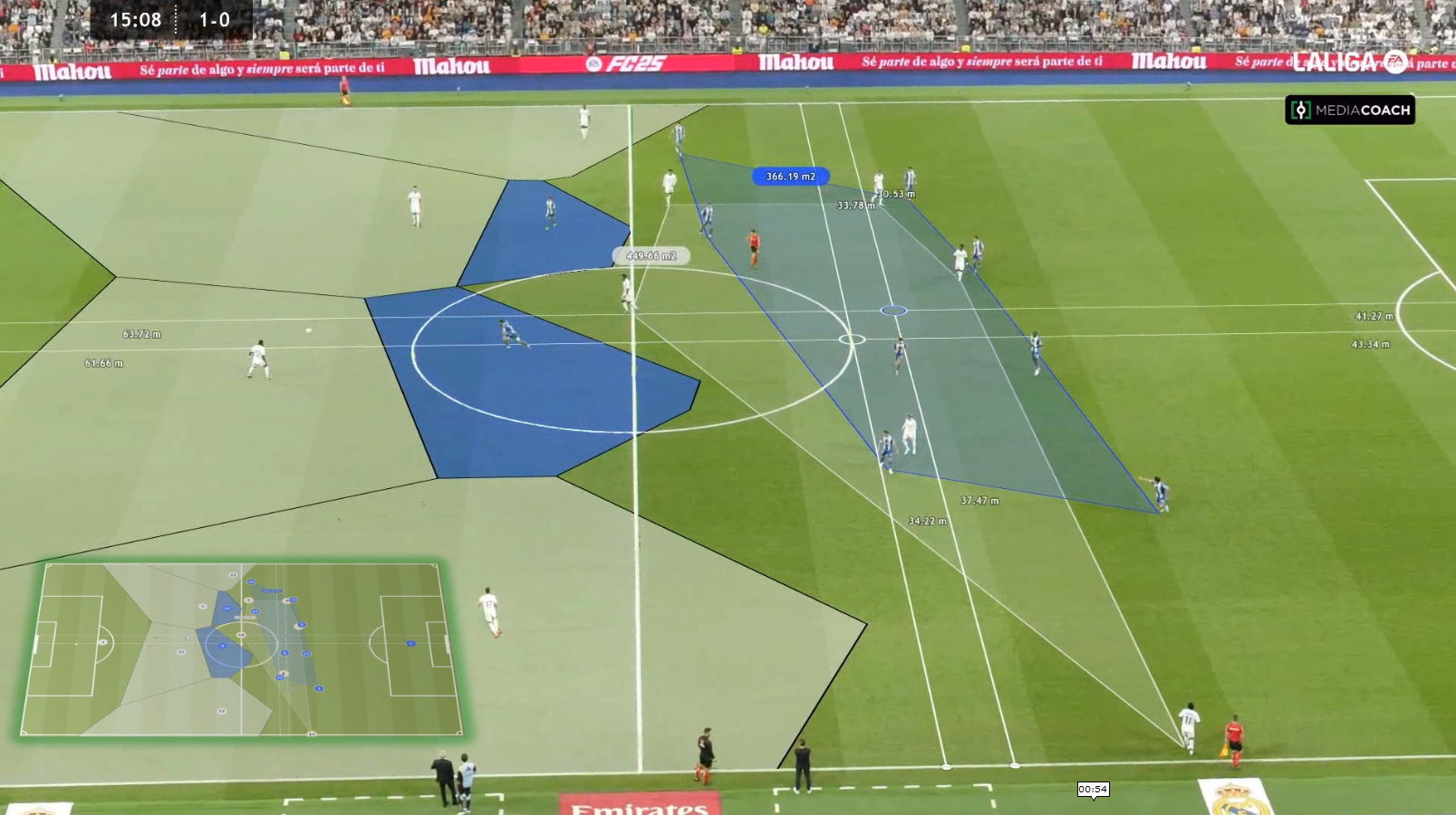
28 Ene How to Understand the Game Through Space: A New Model to Analyze Offensive and Defensive Efficiency in Football
At LaLiga, through the Football Intelligence & Performance Area, we have developed a model that combines three powerful tactical analysis tools: the partial convex hull (areas formed by players from specific lines of the team), Voronoi diagrams, and the collective centroid. While it may sound technical, this model has highly practical applications that can help you better plan your training sessions and adjust strategies during competitions. Here, we explain it simply and practically.
What Have We Analyzed?
The goal was to better understand how teams occupy space on the field and what we can learn to improve performance. To do this:
- Partial convex hull: We created specific areas of occupation, excluding the offensive lines (from the defending team) and defensive lines (from the attacking team) to focus on the behavior of the midfielders and defenders (in the defensive phase) or midfielders and forwards (in the offensive phase).
- Voronoi diagrams: We analyzed how players outside these areas (forwards from the defending team and defenders from the attacking team) occupy the surrounding space.
- Collective centroid: We calculated the equilibrium point of the team’s block (excluding the goalkeeper), helping us understand whether the team is compact or unbalanced.
Key Results: What Does This Mean for You as a Coach?
- Intersection zone: the key area for finalization.
- The intersection zone between the offensive and defensive convex hull becomes the most vulnerable area for the defense and the most exploitable for the attack. This is especially relevant in the finalization phase, where decisive passes and penetrating movements occur.
- Key measurements: The size of the area (in square meters) and the number of attacking players within this zone provide useful insights into defensive vulnerability.
- Practical example: Design drills simulating high-density situations in this area. Focus on:
- Coordinated movements between forwards and midfielders to exploit spaces.
- Defensive actions to reduce the opponent’s influence in this critical zone.
- The centroid: team balance or imbalance.
- Comparing the centroid of the entire block with that of the partial convex hull (two lines) allows you to detect imbalances in team distribution, both in depth and width. This analysis is influenced by the position and movement of the ball.
- Practical example: Use this information to adjust:
- The compactness of the defensive block during retreat situations.
- The team’s width and depth in the offensive phase, ensuring balance between lines.
- Voronoi area of the forward line in defense: involvement in defensive tasks.
- The Voronoi area of the defending team’s forwards measures their participation in pressing and space occupation. Their impact depends on the defensive block (high, mid, or low).
- Practical example:
- In a high block, focus on aggressive pressing by the forwards.
- In a low block, evaluate their ability to close passing lanes to the midfield.
- Voronoi area of the defensive line in attack: influence of full-backs.
- The Voronoi area of the attacking team’s defenders, particularly the full-backs, highlights their involvement in the offensive phase. This analysis helps understand how they use wide channels and how much space they occupy during attacks.
- Practical example: Work on drills that integrate full-backs into offensive creation, maximizing their impact on the flanks while ensuring the team maintains defensive balance in case of loss.
How Can You Use This Information Day-to-Day?
- Design Specific Drills:
- Simulate pressing situations in the intersection zone to improve coordination between lines.
- Work on block adjustments based on the ball’s movement and the centroids.
- Adjust Your Match Strategies:
- Strengthen density in the intersection zone if the opponent focuses their attack through the central channel.
- Use the Voronoi area to measure and improve the defensive involvement of forwards or the offensive depth of full-backs.
- Evaluate Your Players with Objective Data:
- Analyze which players have the greatest impact on compactness and space occupation.
- Observe who dominates space outside the block during transitions.
Conclusion
This model provides practical, data-driven tools to better understand how teams occupy and exploit space in different phases of the game. From the critical intersection zone during finalization to the involvement of forwards and full-backs in defensive and offensive tasks, coaches can use this information to better plan their training sessions and adjust strategies during matches. Understanding these dynamics is essential to improving both collective and individual performance.


